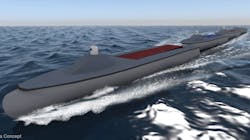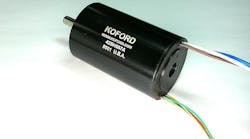ARLINGTON, Va. – Imagine the following scenario: four medium-sized U.S. Navy vessels depart from a U.S. port. There’s no crew aboard any of these unmanned vessels. Defense News reports. Continue reading original article
The Military & Aerospace Electronics take:
22 June 2020 -- This is the Sea Train, and it may not be as far-fetched as it sounds. The Defense Advanced Research Projects Agency is investing in several open-ocean technologies to make it a reality.
The U.S. Navy and the Marine Corps are moving from a few large manned surface ships to a more distributed fleet of smaller vessels, including unmanned ships, that can conduct surveillance and engage in electronic warfare (EW) and offensive operations.
While these unmanned vessels are smaller and more agile than their large, manned companions, they are limited by the increased wave-making resistance that plagues smaller vessels. Due to their size, they simply can’t carry enough fuel to make the long-range journeys envisioned by DARPA without refueling.
Related: Unmanned submarines seen as key to dominating the world’s oceans
John Keller, chief editor
Military & Aerospace Electronics



